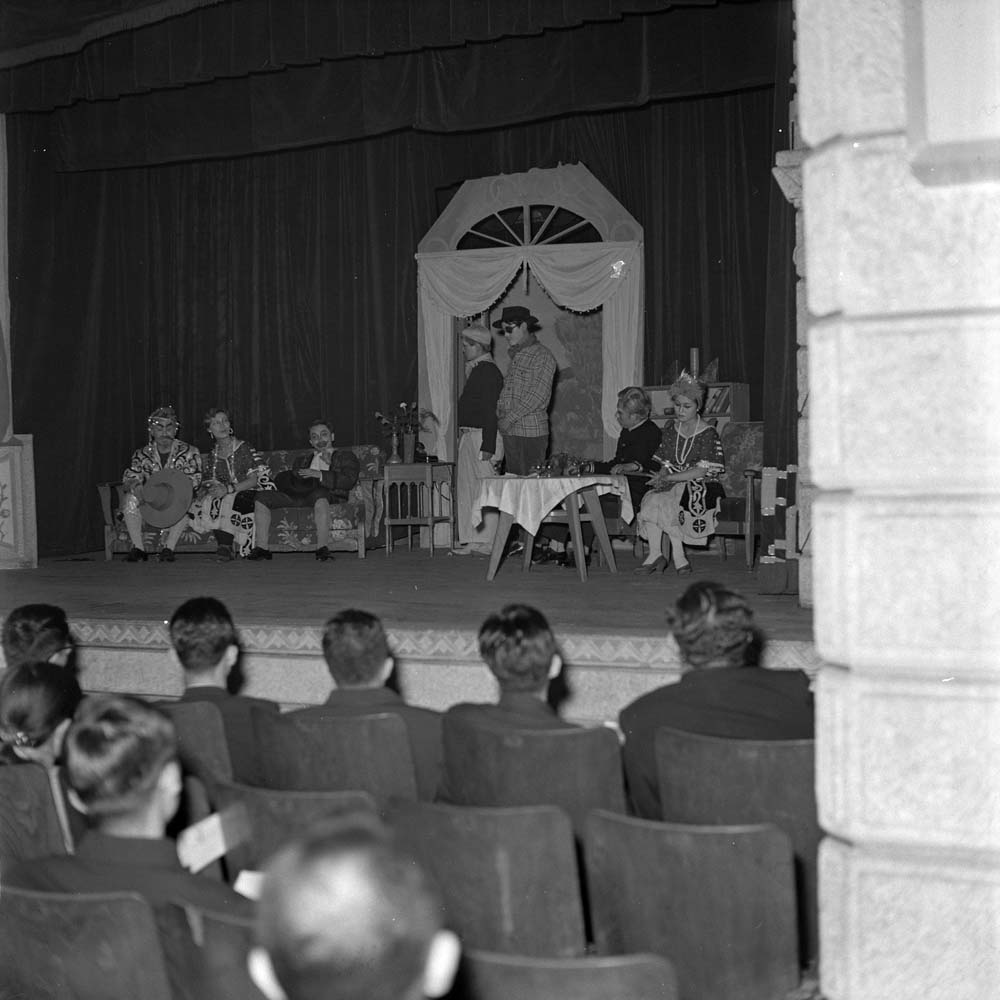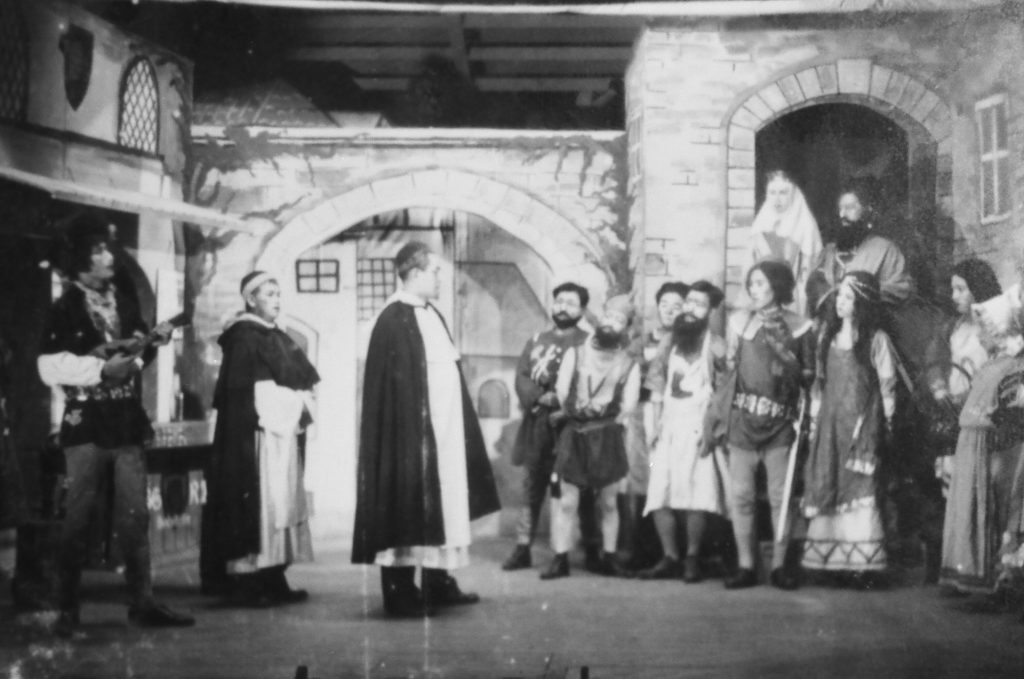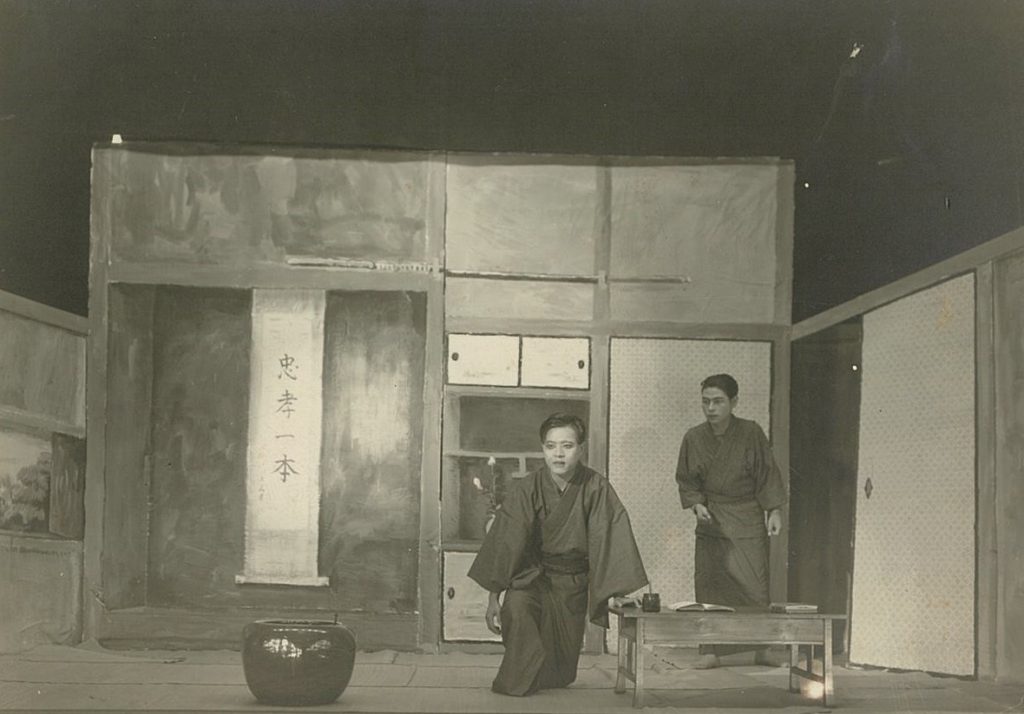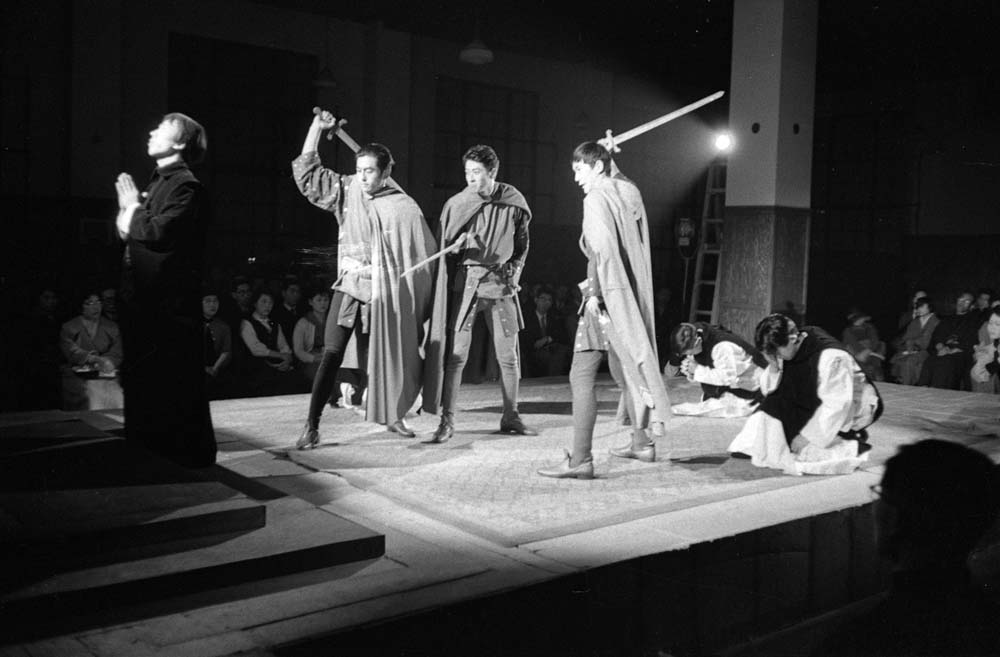The enduring bond with theater and Sophia University has passed down through generations, as many performances by a famous theater company have taken place on its stage.

Did you know Sophia University is home to a “Small Theater”? This name isn’t official; it’s just a beloved nickname. While it’s formally known as the Hall in Building 1, it’s been used for years as a hub for student theater activities, earning the nickname “Sophia Little Theater” among the campus community. Many notable figures have performed, directed, or attended plays in this auditorium. The Jesuits’ deep connection to the theatre is evident when we trace its origins.
1.The Jesuits and School Theater

In the past, it was common for faculty and students at Sophia University to sing together or perform plays on various occasions, especially those involving storytelling. At Jesuit schools, theatrical activities were valued as a form of self-expression, alongside classical literature. Underlying this was the foundational philosophy of Ignatius of Loyola, which sought personal harmony between opposing elements: divine grace and human free will, individual independence and obedience to authority.
The first Jesuit theatrical productions are believed to have started in Europe at the Collegio Mamelino in Messina, Sicily, in 1551. They spread rapidly throughout Europe, with plays written not only in Latin but also incorporating regional languages like German and French. In Japan, plays based on biblical narratives were performed in Funaichi (Oita) as early as 1560. These theatrical activities aimed to promote a widespread understanding of biblical texts and the spirit of Christian humanism.
2.Theatrical Activities at Sophia University

During the prewar era, the most prominent extracurricular theatrical organization at Sophia University was the Theatrical Studies Society. Founded in 1931, the society conducted research on theater and theatrical studies. The organization consisted of five departments—directing, acting, stage design, sound effects, and literature—each headed by a director and a deputy director. Starting in 1949, the society created the “Theatre Laboratory.” Based on a single theme, the five departments formed cross-disciplinary groups to study theater holistically. This included props, lighting, scripts, member-created plays, and directing methods.
Sophia University is a Catholic university, but its theater productions were not necessarily religious or ethical in nature. In that sense, it was similar to theater projects at other non-religious universities, performing classical and contemporary plays from Japan and abroad.
Though activities were temporarily suspended during the war, the Theater Research Society resumed in January 1946, shortly after the war ended, staging Kishida Kunio’s play Torihiki ni Arazu (Not a Deal). Then, at the first university festival in November of that year, the society held its first regular performance. That production was Gerhart Hauptmann’s “The Ascension of Hannele”. Since then, plays by renowned domestic and international playwrights have continued to be performed. Playwrights and titles staged in the early postwar period include: Anton Chekhov, The Marriage Proposal; Juro Miyoshi, Inaba Kozo; Paul Claudel, The Annunciation to Marie; Kunio Kishida , Kani-kun’s Visiting Day; Hugo von Hofmannsthal, Jedermann; Hermann Heuvers, The Arrival of St. Francis Xavier in Japan; Mantaro Kubota, Asamei; Junji Kinoshita, The Tale of Hikoichi; Sophocles, Oedipus Rex; Tsuneari Fukuda, The Last Trump Card; Rinzo Shiina, The Landlord’s Trip to Tokyo; Jean Cocteau, Orpheus; Thomas Stearns Eliot, Murder in the Cathedral; Yukio Mishima, The Rose and the Pirate; Samuel Beckett, Waiting for Godot, etc.


3.The Building 1 Auditorium, commonly known as the “Sophia Small Theater”
The Building 1 Auditorium primarily staged plays. However, it was not until 1971 that the auditorium was first used as a special facility dedicated to student theater. That year, Father Donald Mason, an English professor, and theater enthusiast, teamed up with students from the Theater Council and the English drama circle, Sophia English Theatrical Society (SETS), to renovate the auditorium with paint and carpentry tools in their hands. Mason served as advisor to SETS at the time. Their goal was to create a small theater that would be freely available for students to use. They boldly painted the white walls jet black.
For a time, this theater gained fame beyond the university. It even hosted performances by Hideki Noda’s “Yume no Yuminsha” troupe. Furthermore, records indicate that His Majesty Emperor Naruhito, then Crown Prince, visited the theater to watch a performance.
The Auditorium in Building 1 remains a focal point for theatrical and storytelling performances, primarily used by extracurricular groups connected to the Theater Council. The groups practice daily, performing regularly. These shows are open to the public. Why not experience this captivating space where the world of theater comes to life.